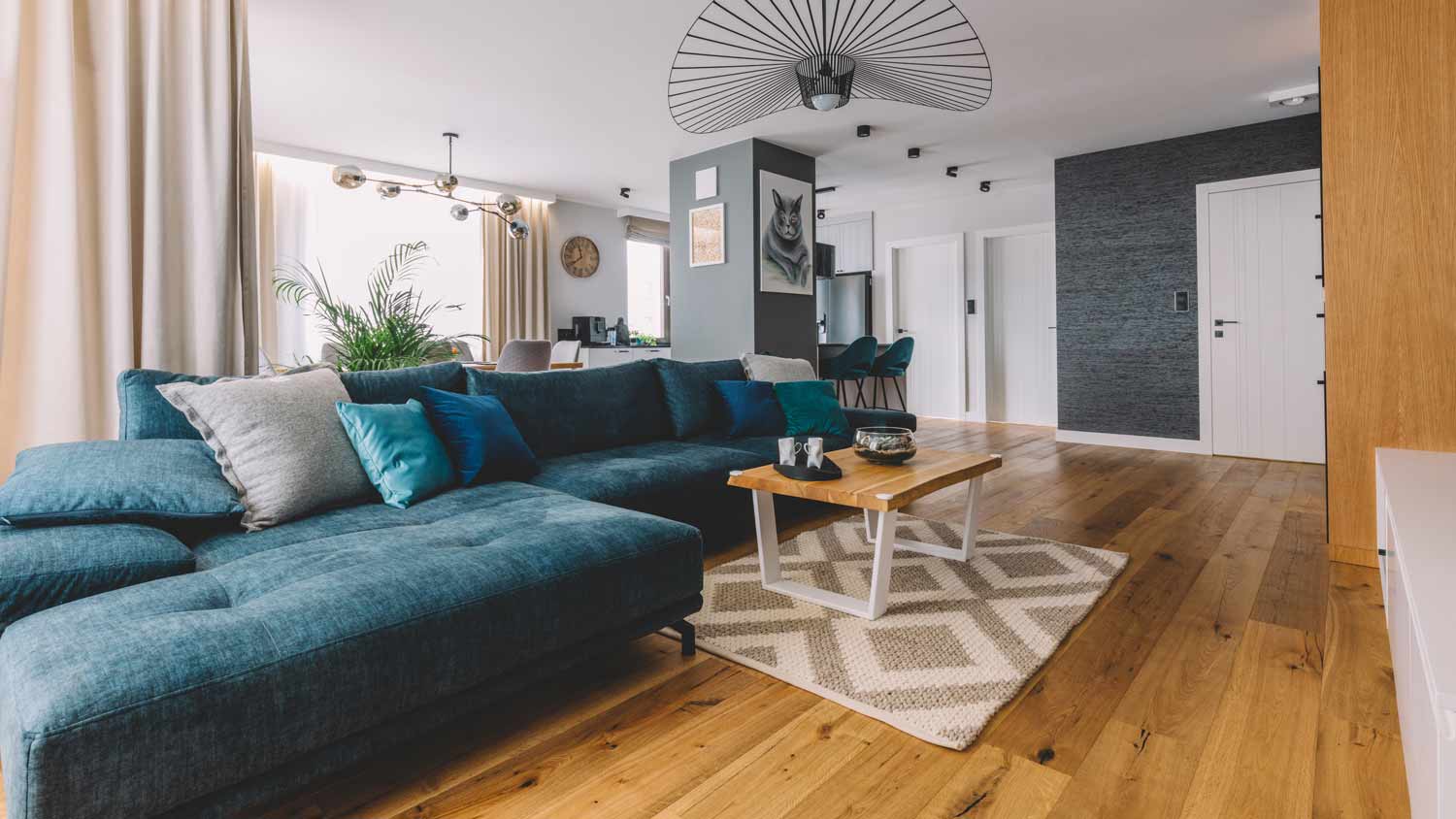The Best Types of Flooring for Your Home Gym
Choose a gym floor surface that will take your workout to the next level


While not as exciting as picking out the latest strength training or cardio equipment for your home gym, gym floors are an important consideration—laying the groundwork and intention for the space. To decide which gym floor is the best type for your home gym, consider features like impact resistance and whether or not you are replacing it or installing it over existing flooring. The idea of a home gym is to style it as you see fit, so you'll want to weigh each of these home gym flooring ideas.
1. Rubber Flooring
Rubber flooring is the number one option for many home and commercial gyms. It’s a highly durable and water-resistant material, perfect for absorbing the shock of weights and resisting moisture and humidity. You typically don't need to remove the existing flooring and can easily DIY install it over the top.
Rubber flooring does have a few drawbacks to consider. It comes in at around $4 to $12 per square foot on average, which is on the higher end, and it has more of a functional look rather than a design-forward aesthetic.
2. Foam Flooring

Foam flooring is a step-down from rubber flooring in the durability department but offers a wide variety of colors and finishes. Want to have a hardwood floor look without worrying about cracks appearing from an intense workout session? There are foam tiles out there that mimic wood and look stylish while still protecting your floors.
However, on the other hand, foam flooring tends to have a shorter life span. It only costs around $1 to $5 per square foot, but you might end up replacing it often if you have children or pets that love to run circles in your home gym.
3. Vinyl Flooring
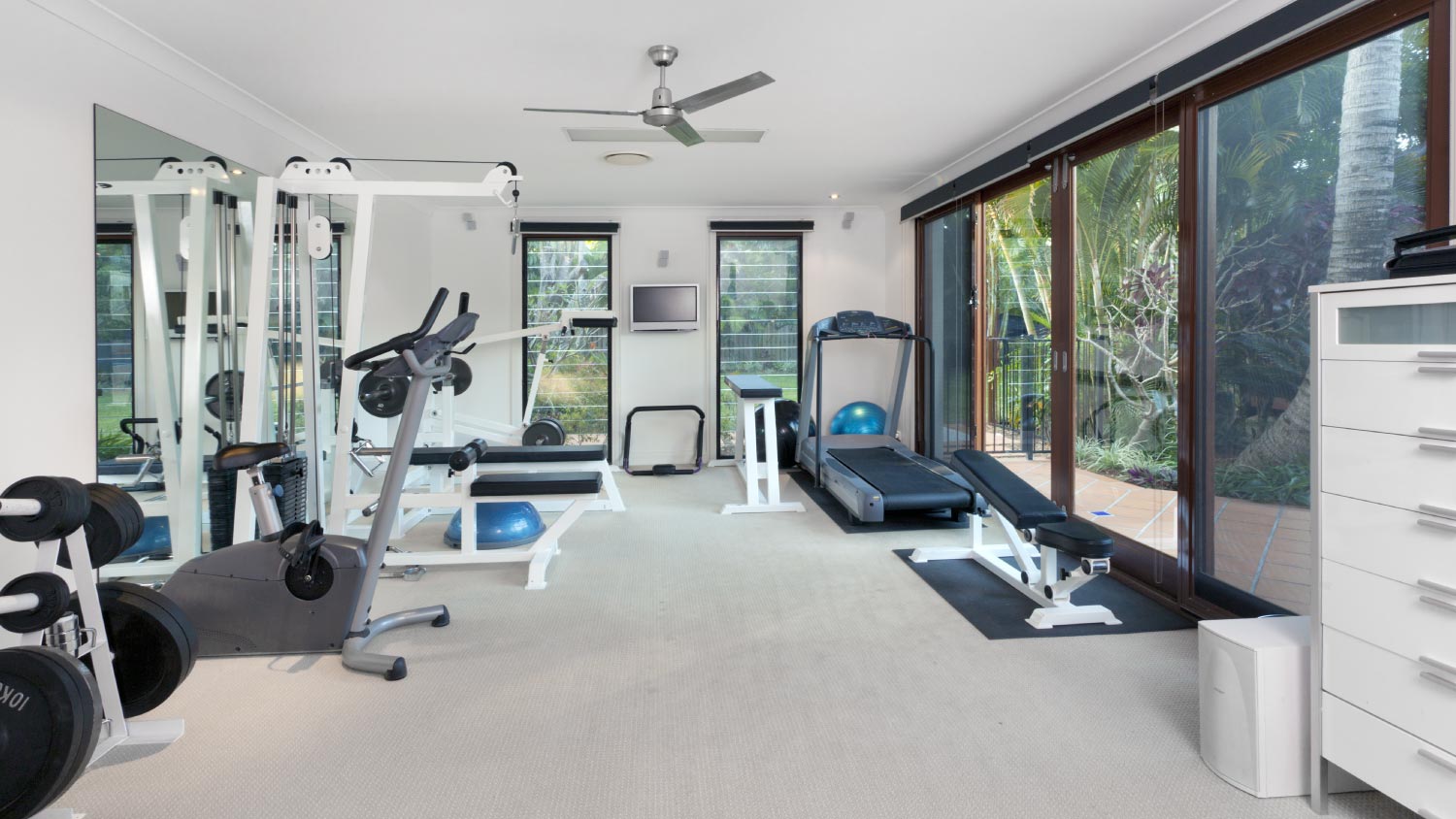
Vinyl flooring takes a step in the direction of style over durability. Plus, vinyl flooring actually holds up better compared to foam when it comes to impact and endurance activities. So if your home gym is more of a HIIT area, you might want to consider vinyl.
Vinyl does cost more at around $3 to $7 per square foot, and it’s still not as durable as rubber. Depending on your home gym's purpose, this may make it a less appealing option, as it tends to cost more to replace if a piece breaks.
4. Carpet

Carpet comes in somewhere between comfort and durability. If you have carpet in your home gym already, you might want to simply leave it there and save some money. But you may need to consult a local flooring contractor to see if the carpet padding underneath your existing carpet can withstand workout activities.
Realistically, you’ll need to replace carpet down the road, even if it’s doing a great job in the meantime. The reason is that carpet holds on to sweat and moisture, which increases the chance of mold and mildew forming throughout the pile over time. Routine maintenance and carpet cleaning are also good to keep the not-so-fresh gym smells from becoming a constant in your flooring.
Carpet costs around $3.50 to $11 per square foot to install.
5. Artificial Turf
You’re going to need a decently large space for artificial turf to be worth the money. So if you have a small home gym, you might want to reconsider this flooring option.
Artificial turf allows for outdoor activities such as sled pulls and even sprinting without ever needing to step into the outdoors. Turf is about the same price as vinyl, at around $2.50 to $7 per square foot to install. Just don’t let the dog see this area, as they might think you brought their toilet into the gym instead.
6. Concrete Flooring
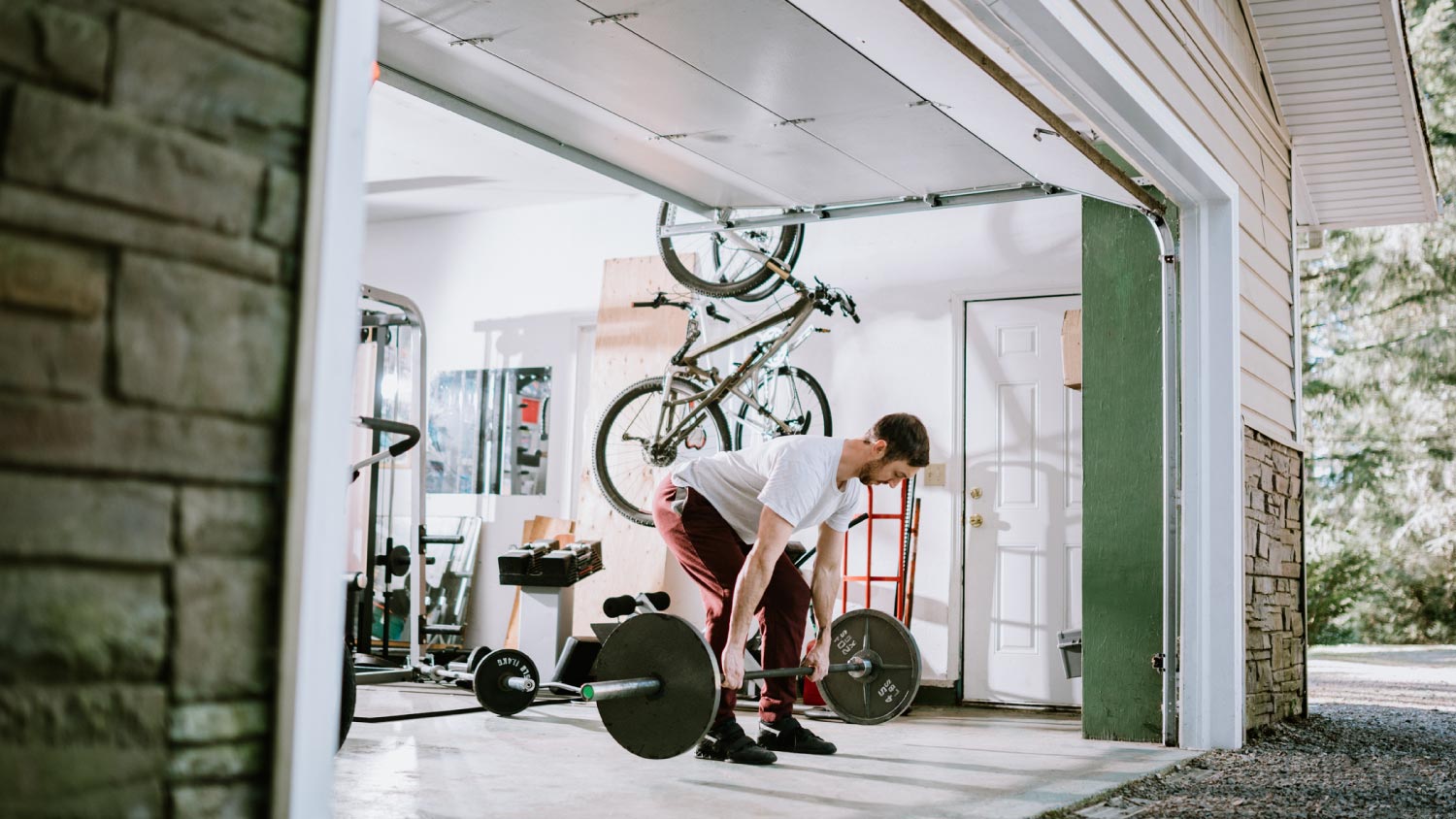
If your home gym currently is in the garage or basement, you may be tempted to use only concrete flooring. This is only ideal in the short term because concrete flooring is highly susceptible to cracking. Ideally, you'll want to combine the concrete flooring with a layer of another flooring type above it, like artificial turf or click-and-lock foam tiles.
Polished concrete floors will cost around $2 to $8 per square foot.
7. Hardwood Flooring
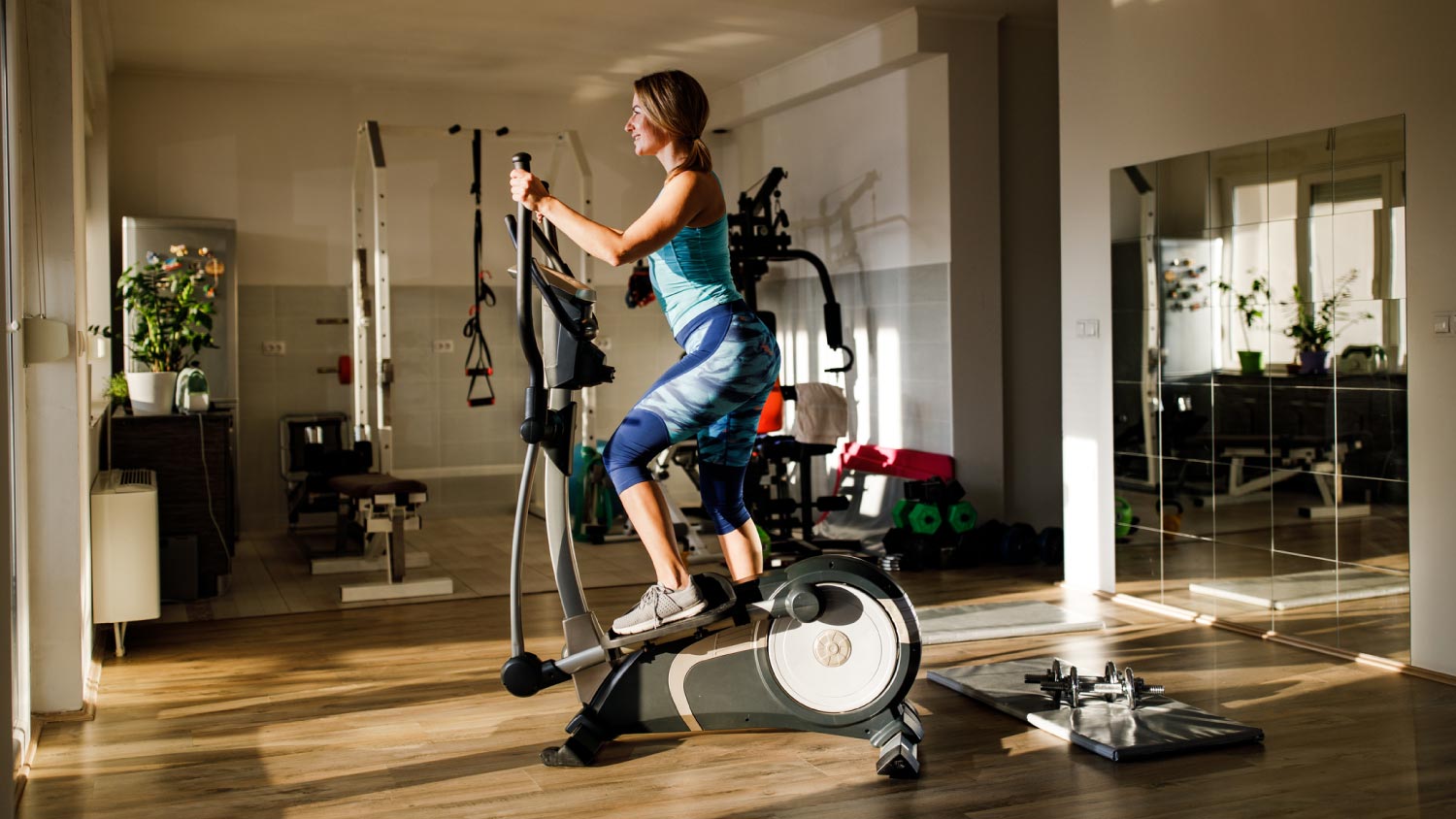
If you’re a fan of low-impact exercise and want to focus your home gym design on activities like yoga, pilates, spinning, or barre, hardwood flooring is a great option to consider. Its aesthetic qualities and ROI for your home value are two of its biggest benefits. However, if you’re going to bring weights into a gym with hardwood floors, ensure the plates are rubber to minimize the impact to the hardwood floors themselves.
Hardwood floors cost anywhere from $6 to $22 per square foot to install.
8. Corkboard Flooring
Corkboard flooring is an environmentally friendly option for many reasons, including that it comes from biodegradable materials. Cork floors are a perfect complement to areas such as basements or garages, as the material also works as an insulator.
If the tiniest scratches are known to bother you, then you might want to stay away from cork flooring. Cork flooring costs around $2 to $10 per square foot.
What To Consider When Selecting a Gym Floor
Whether you’re building your home gym as a brand new addition or are transforming an existing space, the flooring you select will impact your equipment choices, what sort of activities you can comfortably do, and your home’s value. As you think about your flooring options, consider the following:
Cost
The flooring materials you choose will significantly change your overall budget. Choosing lower-cost options, like foam flooring or some cork or concrete options, may mean you have more to spend on specialized equipment or other needs for your gym. Higher cost options, like hardwood or rubber flooring, may mean you have less to spend on other aspects of your home gym.
Equipment and Exercise Preferences
The type of exercise you enjoy and your equipment preferences can help determine what sort of flooring is ideal for you. If you are doing low-impact workouts like yoga, Tai Chi, or pilates, attractive but less durable hardwood flooring may be ideal. If you prefer to use a lot of heavy equipment or weights or to perform higher impact exercises, you’ll want to choose something more durable, like foam or cork flooring.
Aesthetic
While you’ll be using your home gym differently than the rest of your space, you’ll want to consider how the flooring you choose meshes with the rest of your home. Ideally, you should pick a material that is aesthetically cohesive with flooring in other rooms.
Home Value
Ultimately, your home gym’s flooring will impact your home’s value even if you don’t plan to sell for quite some time. It can be helpful to think about how long you plan to live in your home as you determine how much weight to place on your enjoyment of the space and the resale value.

.jpg?impolicy=leadImage)

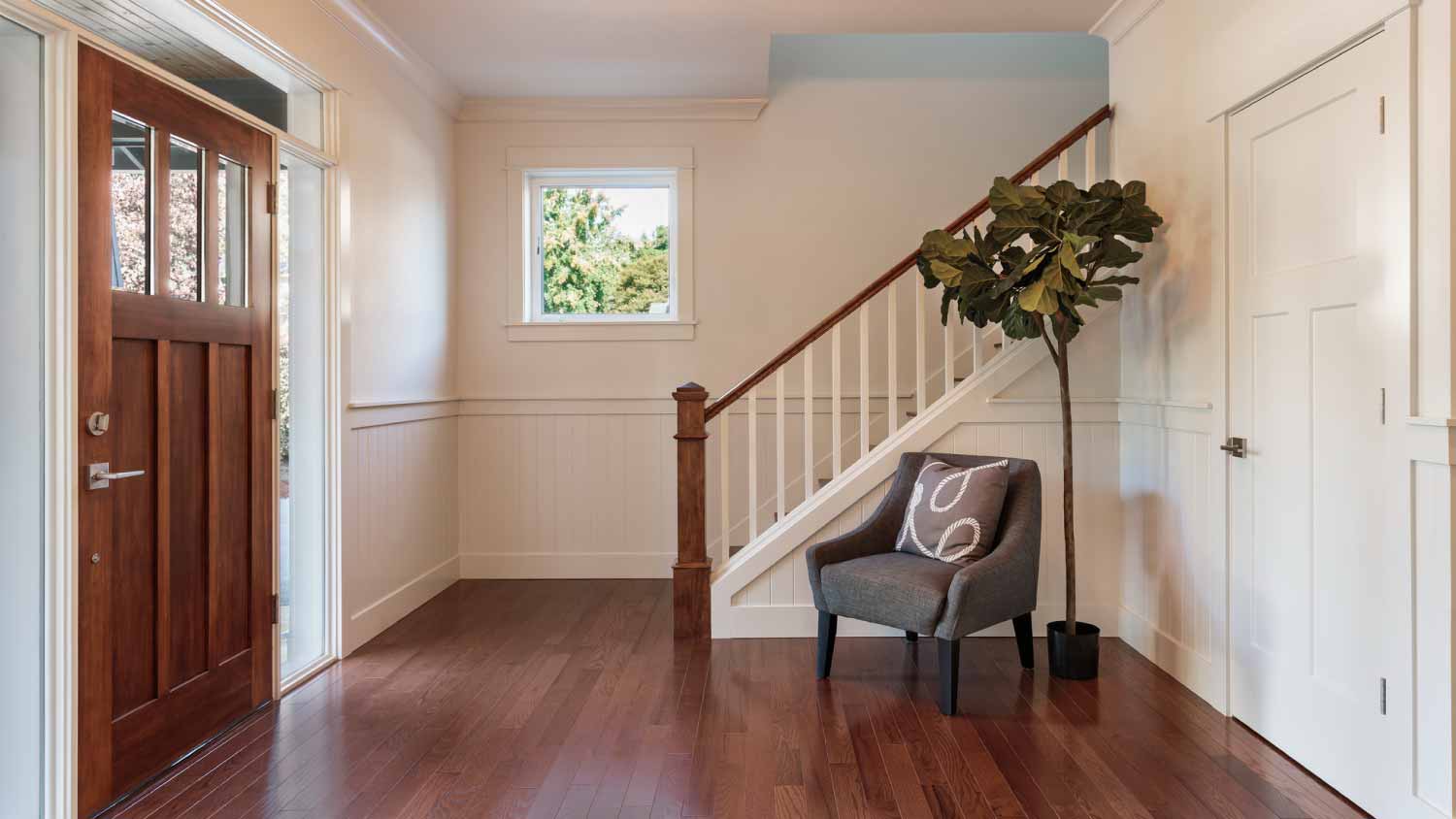

- 11 Types of Flooring to Consider for Your Home
- 6 Basement Home Gym Ideas to Try After Dropping Your Gym Membership
- 7 Budget-Friendly Kitchen Flooring Options for Every Style
- Estimate Your Flooring Cost With These Factors
- What Types of Flooring Can Be Installed Over Ceramic Tile?
- 9 Tips to Clean and Sanitize Your Home Gym Equipment
- How Long Does Laminate Flooring Last? What to Know Before Installing or Replacing Your Flooring
- Cleaning Methods for Every Floor Type
- The Unfortunate Signs of Mold Under Vinyl Flooring
- How to Cut Laminate Flooring: A Complete Guide



